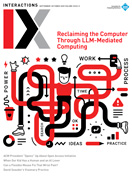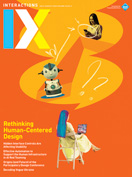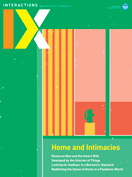Authors:
Yolande Strengers
In 2014 I wrote a cover story for Interactions asking, "Are you designing for Resource Man?" [1]. The provocation was based on my research exploring the role of smart energy technologies in everyday life and their ability to support resource management and decarbonization. I argued that the energy industry was imagining householders as rational and efficient micro resource managers, or "resource men," who optimize energy and water demand with data and automation. I showed how Resource Man's imagined life, cast in the image of the male-dominated fields of energy engineering and economics, is mostly devoid of life. Envisioned as…
You must be a member of SIGCHI, a subscriber to ACM's Digital Library, or an interactions subscriber to read the full text of this article.
GET ACCESS
Join ACM SIGCHIIn addition to all of the professional benefits of being a SIGCHI member, members get full access to interactions online content and receive the print version of the magazine bimonthly.
Subscribe to the ACM Digital Library
Get access to all interactions content online and the entire archive of ACM publications dating back to 1954. (Please check with your institution to see if it already has a subscription.)
Subscribe to interactions
Get full access to interactions online content and receive the print version of the magazine bimonthly.






